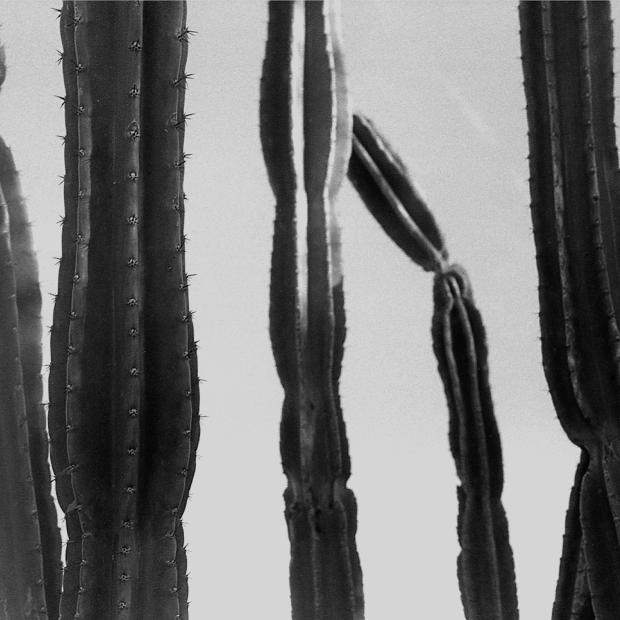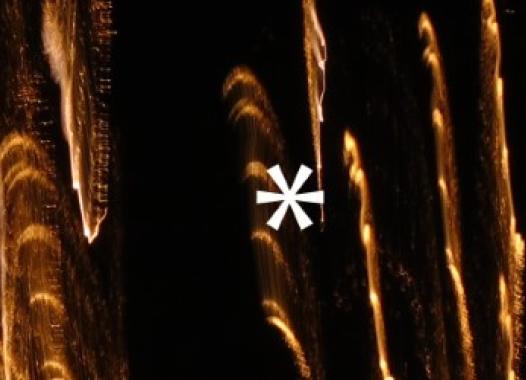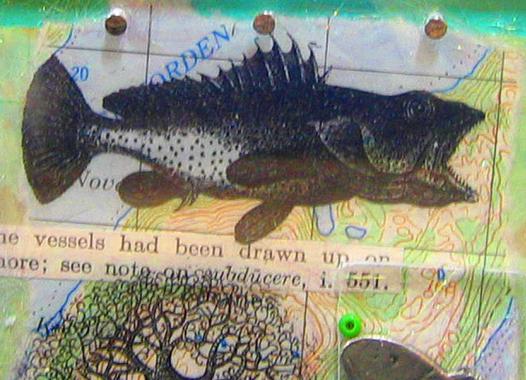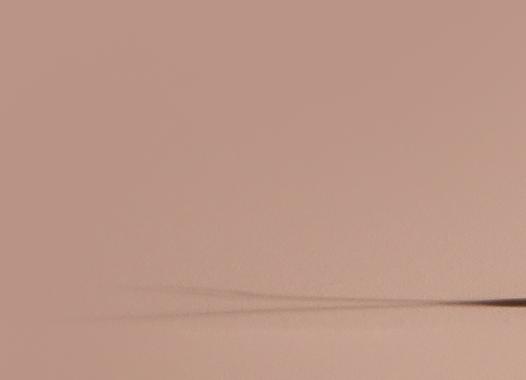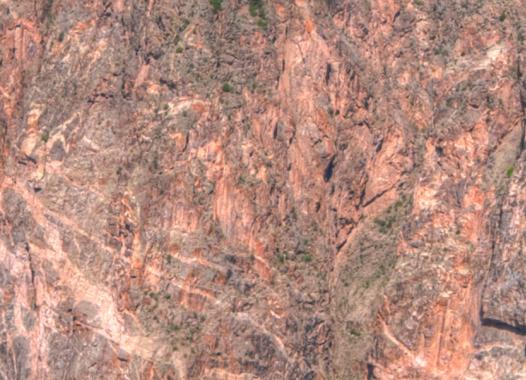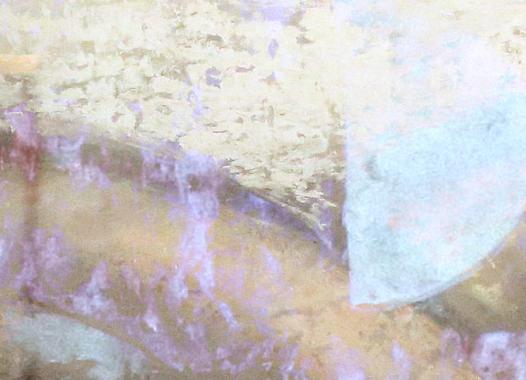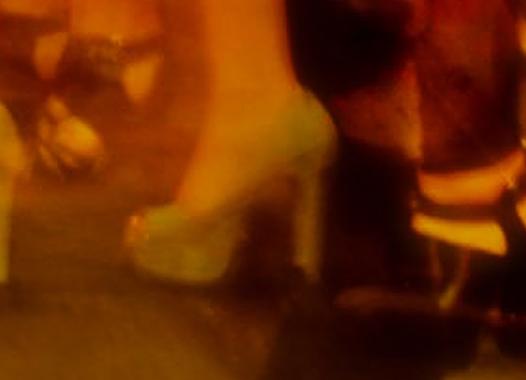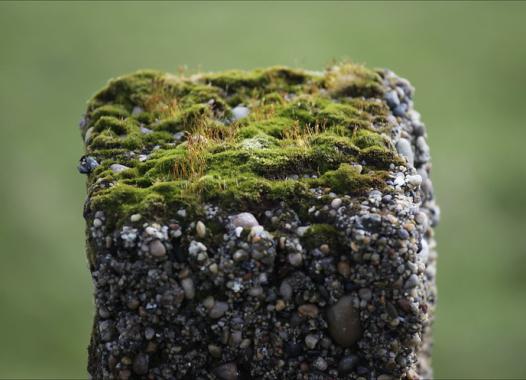
This is an excerpt from Cleo Woelfle-Erskine's "The Watershed Body: Transgressing Frontiers in Riverine Sciences, Planning Stochastic Multispecies Worlds"
“The plan [in the undercommons] is to invent the means in a common experiment launched from any kitchen, any back porch, any basement, any hall, any park bench, any improvised party, every night. This ongoing experiment with the informal, carried out by and on the means of social reproduction, as the to come of the forms of life, is what we mean by planning; planning in the undercommons is not an activity, not fishing or dancing or teaching or loving, but the ceaseless experiment with the futurial presence of the forms of life that make such activities possible.”
—Harney and Moten, The Undercommons: Fugitive Planning and Black Study
The first time I touched a living beaver was during the summer of 2014, on a Columbia River tributary, during an era of extinctions, loss, shock, reassessment, and disorientation that is coming to be called the Anthropocene. I traveled there with July Cole, continuing years of scientific, artistic, and political engagement with beaver-salmon-human worlds. But only now did we engage physically with the immediate lively heft and squirm and odor of Castor canadensis in the flesh. We helped relocate “nuisance” beavers to territories where people welcomed them, with all their unpredictable land and water interventions. We were honored to pitch in and facilitate the beavers’ never-ending projects. Beaver works—dams, lodges, canals, and tree-felling projects—inevitably transgress private property lines, interrupt human irrigation and orchard schemes, and shift landscapes from fence-able pastures and tame drained fields to dynamic mosaics of thicket, meadow, water, bog, and woods. We liked thinking about how the beavers we met could be decolonizing the controlled territories of Manifest Destiny, and how we might be helping them do it.
Manifest Destiny began as a rationale for westward expansion by white settlers in the 1850s; it was tied up in claims of white intellectual and technological superiority and professed a God-given mandate for white people to wipe out or subjugate Indigenous people (Lepner, 1837), and later to exclude black people and nonwhite immigrants and arrivants from land acquisition and resource-extraction benefits. Manifest Destiny thinking, as I use the term, is the notion of human separation from and dominion over other species and elementals. Indigenous sciences and other epistemologies have always been central to salmon, river, and watershed governance in the Pacific West, though settler science has often erased contributions of that knowledge.[1] Any project to reconfigure watershed governance in a mode that resists Manifest Destiny’s ongoing domination requires that I and other non-Indigenous scholars take seriously Indigenous epistemologies and the sovereignties in which they are rooted. I characterize large dams and levee projects of the twentieth century as Manifest Destiny projects—among other extractive industries. In this article, in conversation with Indigenous, decolonial, and feminist scholars, I trace several ways that Manifest Destiny and its infrastructural legacies disrupt relations among humans and other species, imposing disproportionate burdens on Indigenous, nonwhite, and poor communities. Finally, I explore how queer and trans disruptions of Manifest Destiny thinking and legacies might contribute to decolonial projects.
The beavers’ forests were burning all around July and me that summer; we wondered what effects their future interventions might have on fire regimes. At the same time, water-scarcity debates in our home state of California zeroed in on technological salvation in the form of immense and static waterworks, including new large dams that would foreclose the possibilities of millions of beaver, salmon, humans, and what Donna Haraway would call their “messmates” (Haraway, 2008). In a move that contradicts and rejects the logics of these massive waterworks, the biologists we met in Washington relocate beavers to high mountain streams where they have been absent for nearly two centuries, hoping that they will build small, leaky dams not subject to human control. With time, these dams create pools in floodplain meadows that shelter juvenile salmon (Oncorhynchus spp.) and release cool water downstream in the late summer. Methods developed by US Forest Service biologists for live-trapping and relocating families of beaver on the Methow River have traveled to the nearby Yakima River, where state biologists are collaborating with the Yakama Nation on a wide range of salmon recovery projects, and to six other rivers in Washington. In trying to reverse the damage of twentieth-century river engineering projects, human actors are entering into improvisatory riparian relations with this animal that they often call an ecosystem engineer.
In an earlier article, Cole and I (2015) thought with these beavers about how regenerative cuts can open possibilities of transformation for a human engineer who yearns against the totalizing assumptions of the Anthropocene. The conception of the Anthropocene as a global phenomenon arose together with global climate models and was accompanied, among the geophysicists who coined the term, by the figure of a single anthropos. This assumption of universal humanity erases differences of race, class, culture, and different legacies of colonialism and capitalism (Foster, Clark, & York, 2011; Moore, 2000). People in different places bear unequal responsibility for changing the planet’s surface and climate, and those who have contributed least to greenhouse gas pollution bear the heaviest burden of changing climates, oceans, and ecological conditions (Moore, 2015). Indigenous, feminist, and anticapitalist critics have responded with other understandings of the epoch and with terms like Capitalocene and Chthulucene that problematize a singular anthropos, draw attention to capitalism as a driving force behind climate change, and pay attention to the ways changing climates affect Indigenous and postcolonial territories (Haraway, 2016; Moore, 2015; Todd, 2016; Tsing, 2012).
In this article, I bring Cole’s and my theory of a transfigured watershed body to bear on human-beaver-salmon encounters at two salmon-recovery sites in the Pacific West: a Karuk-led project on the Klamath River and a citizen science/agency collaborative project along the beaverless Salmon Creek and Russian River. These sites have different legacies of Indigenous dispossession, resource extraction, hydrologic alteration, and salmon decline, resulting in different approaches to resource policy and tribal co-management. Both stories concern salmon recovery in the Pacific West, where humans or beavers have initiated collaborative projects to raise water tables, keep rivers from going dry, and improve salmon habitat. People’s encounters with beavers and their ponds thick with salmon are inspiring them to change how they undertake habitat restoration and also spurring some to reconsider the proper task of human ecologists and engineers, into a mode inspired by beavers themselves. However, these improvisatory, perhaps unconscious gestures have a long way to go before they actually decolonize riverine relations. And how to effect that transformation?
Let me recapitulate that 2015 article briefly. Drawing on our own queer-trans experience on various front lines, and thinking with Eva Hayward (2008) about transgender embodiment and becoming, Cole and I consider a body of water—for example, a river, which draws together all of the above and underground water in a watershed—as like our own trans bodies and also as a slippery double for the psyche of an Anthropocene engineer. Hayward’s theory helps Cole and me think about how beaver modify landscapes differently from human engineers and how human engineering might be transformed. We argue that thinking with beaver as stochastic[2] transgressors against Manifest Destiny engineering projects could transfigure engineers’ approaches and river restoration. What if, rather than trapping beavers into service as “ecosystem engineers,” humans emulated beavers’ reshaping of water and land by creating porous boundaries between land and water and up- and downstream by way of stick-and-mud, leaky, temporary dams?
Such an approach would undermine the thinking behind twentieth-century water-engineering projects that diverted water from streams and wetlands to irrigation ditches and pipelines, benefiting settler agriculture and expanding cities at the expense of flowing rivers. Now, as settler descendants increasingly collaborate with tribes on beaver projects, do these collaborations make decolonizing moves? I think they do if non-Indigenous scientists and residents recognize that these rivers remain integral to Indigenous economies and cultures and that tribes in salmon country have always been the most stalwart defenders of flowing rivers and opponents of practices that degrade riverine habitats. To quote Eve Tuck and K. Wayne Yang (2012), “Decolonization brings about the repatriation of Indigenous land and life.” As my cases will show, settler-descendant collaborators work for decolonization in some, but not all, beaver collaborations.
Cole and my argument’s first main thrust is a trans theory of watershed embodiment: that changing engineered landscapes into beavered ones could realize the watershed’s many bodily potentials. Our other thrust into trans theory argues against naturalizing arguments that trans (and queer) are not transgressive. Where “queer is a not yet here” (Muñoz, 2009), trans, as we theorize it, is a collective move to negotiate gendered movement through society that can accommodate many evolving expressions and categories of being. These negotiations take place within trans theory, over the definition of trans, over its unmarked whiteness and debt to women- and queer-of-color theories, and over its decolonial potentials (Aizura, Cotten, Ochoa, & Vidal-Ortiz, 2014; Stryker, 2006). In activist and feminist spaces, debates over whether masculine or nonbinary-identified people can claim trans and feminist, discussions of hierarchies of oppressions along gender and race lines, and generational differences over pronouns and categories abound. These debates are crucial and inform my evolving understanding of trans political potentials within and beyond identitarian concerns; however, I will not delve further into these conversations here. Instead, I focus on the transgressiveness of trans as embodied by those who, because of political identities or gender expressions at odds with established queer-trans categories, will never assimilate.
In articulating this particular embodied trans politics, this spirit of always-crossing that can animate riverine politics through reciprocal engagements with beavers, I aim to sketch out a trans potential for scientists and others who work for watershed recovery but do not necessarily identify as queer or trans. I want to explore what such people’s taking up of trans moves or trans politics might do for watershed science and for trans theory. I bring Cole and my concept of the watershed body back to specific encounters between salmon advocates and beavers to further explore whether and how river activists might
translate physical transsexual survival techniques into psychological trans-species survival invitations, finding some way to follow the practice of Hayward’s trans figures who “create embodiment by not jumping out of our bodies, but by taking up a fold in our bodies, by folding (or cutting) ourselves, and creating a transformative scar of ourselves (Hayward 2008, 256)” (Woelfle-Erskine and Cole 2015, 308).
As far as I have been able to discover, few of these beaver advocates identify with trans theory or ally themselves with (or are) trans people. Nonetheless, it seems useful to ask whether their actions and discourses may be read as transformations of the watershed body, how deeply the watershed body may be transformed, and when this transformation might undermine Manifest Destiny thinking and support decolonial projects. The idea of a watershed body—which comes into being through relations among its multispecies inhabitants and the landscapes and weather systems that shape them—is also in conversation with Haraway’s (2008) notion of becomings with more-than-human others and Barad’s (2007) notion of phenomena as agential intra-actions among these constituents. I draw out these and other resonances with feminist, queer, and Indigenous theory below and in a forthcoming companion article.
First, I consider what decolonizing ethics may emerge in the contact zone where queer, trans, and Indigenous theory meet. Beavers are not necessarily resistant to co-optation into Manifest Destiny projects. Rather, they are good to think with about how or whether a project might enact a decolonizing ethic. I then travel with the beavers to the Klamath River and Salmon Creek, tracing how their presence and absence have reshaped my own engagements with trans and queer theory and ecological science.
Decolonizing Ethics
Decolonizing ethics, as Zoe Todd, Audra Simpson, and Kim TallBear have argued, are not just worked out in human forums (Simpson, 2011; TallBear, 2014; Todd, 2014); some develop along ditches and sloughs behind dams, by humans working not alone but in collaboration with other beings. These ethics fundamentally threaten Manifest Destiny thinking, which assumes that only (white, male, settler) humans have ethics, which they then impose on other groups of people and on other species and the Earth itself. Although beavers’ ethics, if they exist, are not known to us, their physical undertakings on the continent transgress the territorial insistences and totalizing practices of Manifest Destiny. Their activity thus brings about a physical decolonization; it also ties river systems and species back together in ways that increase resilience in the face of devastation. Beavers do not recognize Manifest Destiny boundaries of human and natural, and many people who collaborate with them on flow or salmon rehabilitation projects also reject binaries between human and natural landscapes when they encourage beavers to build dams in city parks or reinforce beaver dams with posts to help them withstand high flows. When people recognize beavers’ actions and responses as the source for new ethics, their performance of this ethic is an act of decolonization to the extent that it dismantles the notion that only humans have ethics, which they impose on others.
Anna Tsing writes of local knowledge practices’ potential to disrupt colonial practices of “plantation science” in Oregon forests and other places where matsutake mushrooms grow wild:
In plantation science, experts and objects are separated by the will to power; love does not flow between expert and object….For those who love wild mushrooms, such control is not an object; indeterminacy is part of the point. Wherever volunteers gather to promote disturbance forests, or pickers stop to ponder why the mushrooms come up, plantation science loses a little authority. (Tsing, 2011, p. 19)
In the beavery watershed body, these local knowledge practices are the intimate interactions among trappers, hatchery visitors who feed beavers their daily willows, and landowners who come to love beavers’ furry antics and appreciate their water-storage methods, even as they are exasperated by their taste for orchard trees. Only some of these people say they love beavers, but they all have come to feel a sense of liveliness and luckiness in a watershed that holds them and to feel lack and grief when they find lodges burned and ponds drained after fires.
This feeling of recognition, liveness, and rightness is a trans affect, akin to the feeling of coming into the right body that trans people feel when they see their inner sense of self reflected in how other people respond to their gender. While some trans people may articulate this “rightness” as the realization of a single, overarching conscious self, my own experience of trans becoming was of coming into a trans collective, through a sense of mutual recognition that my “self” was never singular. This notion of “right” is never predetermined but always constituted relationally with other people, with ancestors, and, for some, with nonhumans and landscapes. For example, Wesley (2014) theorizes about such trans becoming in a Coast Salish two-spirit context, where her trans becoming is effected through her grandmother’s naming of her as a twin-spirited woman, an invitation to dance at the funeral of another two-spirit tribal member, and her dance in a cedar dress she weaves.
As with the project of coming into one’s own trans body, the trans move of coming into a transfigured watershed body happens with others, never finished, always relationally, and always challenging the fixity of categories. Thus the notion of what a “right” watershed body may be for a given place will always be negotiated in public forums (or in the bar after the science conference), and will change in response to climatic, social, and ecological dynamics or changing understandings of historical and future conditions. This understanding is sometimes tacit or latent.
Decolonizing Moves along the Klamath
Trans theory is only one optic for understanding interspecies relations. Indigenous theory is another, sometimes resonant with trans and queer theorizing of the land-human-water relation and sometimes incommensurate. Indigenous practices of watershed management in the Pacific West have persistently fostered stochasticity on the landscape through relational practices of forest burning, fish and shellfish harvest, and recognition of beavers’ and other species’ world-making practices. When the Yakama, the Karuk, and other tribal watershed managers began to collaborate with beavers, they did not need to transfigure the degraded watershed body but recognized the beavers’ gesture within a different framework and responded to it. In this next story, Harling, a non-Karuk biologist who works closely with the Karuk Tribe, describes a decolonial river transfiguration project that is undertaken collaboratively with and under the guidance of Karuk tribal land managers and that centers Yurok and Karuk salmon science.
This story is foundational to the self-appointed “beaver believer” movement—a loose network of biologists, geomorphologists, and watershed advocates who want to reintroduce beavers as a way to increase streamflow, create juvenile salmon habitat, and recharge groundwater. As such, the story has circulated through salmon-restoration networks across the Pacific West and in beaver advocacy networks that span the Atlantic. I first heard one version of it from Brock Dolman, a beaver advocate who visited this dam later with Will Harling and had his own moment of reckoning with settler legacies of beaver removal while overlooking this beaver pond. I heard another version from my collaborator Dan Sarna on a long drive back from the Klamath River, where our plans to install posts to support a beaver dam on Seiad Creek were thwarted by a forest fire.
Harling (n.d.) begins his story in the domestic sphere, tiptoeing out of the house with the baby on his back and his fishing pole over his shoulder, careful not to wake his wife and sleeping guests, out into the familiar body of the watershed to a good fishing spot. There he encounters geology, water, fish, a beaver, and willows all responding to one another and enters into a responsive intra-action with them.
The relatively wide Orleans Valley gives the river a chance to meander a little here, reclaiming its sinuosity stolen over the past six million years as the Klamath Mountains began to rise from underneath, forcing it into steep sided canyons tracing fault lines in the uplifted bedrock just upstream and downstream of the valley. Fall chinook salmon moving upstream to spawn left wakes in the glassy water as they navigated up through the shallows, and the Klamath’s famed half-pounder steelhead run was coming in with them. Across the river, I noticed a furry head moving slowly upstream. The light brown tuft of hair visible above the water looked like what I thought a beaver would look like, but couldn’t be sure.
Just then I heard a rustle of grass and a swish of a tail on the near shore and backed into the willows to watch. Sure enough, a beaver was swimming up towards us along the edge of the river just twenty feet away. As it cleared the riffle, it moved out into the river and I slowly followed it upstream. Big whiskers and a large black snout, those dark beady eyes and two cute little ears quickly disappeared when it spotted me, and a loud thwack of its tail as it dove alerted its kin that danger was near. Walking home, giddy with excitement from this rare close encounter, I noticed all the stripped willow sticks along the shore, even a clump of uneaten willow shoved under an algal mat, possibly left for a mid-day snack.
Beaver are slowly coming back to the Klamath, recovering from intense trapping that began in the mid-1800s and continuing for nearly a century after until they were almost extinct. In 1850 alone, famed frontiersman and trapper Stephen Meek and his party reportedly trapped 1,800 beaver out of Scott Valley, which at the time was called Beaver Valley. The last beavers in Scott Valley were trapped out by Frank C. Jordan in the winter of 1929–1930 on Marlahan Slough. Beaver throughout much of the Klamath basin suffered the same fate, and even today as they return to less inhabited areas along the mainstem river and its tributaries, they are still shot and trapped in streams where their dams pose a perceived risk to residential and agricultural property.
Harling then sees something—is it a beaver? A fleeting sighting, but the biologist’s eye for a combination of characteristics clinches it. He responds by backing away into the willows. The beaver’s response to Harling, a loud thwack of its tail, brings him into relation with the beaver’s kin, alerted…that danger was near. The beaver is startled. Harling is giddy. That affective relation persists as he walks home to breakfast. Now he notices the stripped willow sticks and willow snacks under an algal mat.
In this passage, Harling’s descriptions of the geologic features ascribe a certain animacy to the river that reclaims its sinuosity, the mountains that have stolen that sinuosity, forcing it into steep sided canyons, and the salmon that navigate up through the shallows. Queer theorist Mel Chen describes such inversions of animacy hierarchies—ascribing humanlike agency to rocks, landforms, and animals—as a queer move of undoing normal categories and boundaries (Chen, 2012). In noting these animacies and in speaking for and with the various riverine creatures and elementals in a multivocal chorus, Harling is taking up a new position within and of the watershed body, refusing the position of the disinterested, unaffected engineer who sees rivers as drainage channels and water as an inert and lifeless fluid. To borrow from Moten and Harney (2013), he is taking up the fugitive art of social life, which is practiced “in animative and improvisatory decomposition of [politics’] inert body…[and] emerges as an ensemblic stand, a kinetic position.”
In discussing this ensemble, Moten later riffs on multiplicity and multivocality as key strategies in opposition to the single authoritative voice that characterizes state planning and also Manifest Destiny logics, which miss the signal in the stochastic noise. Here Harling is seeing the signal—what ecologists gloss as emergent properties, like biodiversity—as of, and emerging through, the noise of the predawn watershed body: its gurgles and thwacks and tweet-tweet-tweets, its multiplicities of relations and responses unfolding backward and forward and in circles through time. (As the next story will show, many engineers and biologists could not tune in to this chorus.) To continue Harney and Moten’s riff, “Its encoded noise is hidden in plain sight from the ones who refuse to see and hear—even while placing under constant surveillance—the thing whose repressive imitation they call for and are.”
As he engages with the beaver, Harling is noticing multispecies entanglements along the shore and drawing himself into affective relations with the shoreline world. He extends this affect of care to beavers that were trapped and shot relentlessly long before his time. In imagining beavers’ experience of trapping (a Manifest Destiny project), he emphasizes the beavers’ own agency (the quick disappearance at the sight of the dangerous human, their foresight in stashing some willows to eat later) in their return to the Klamath as a sign or possibility of subversive human-beaver relations. This agency is key to the later part of the story, in which humans recognize beavers’ improvisatory dam-building gestures as collaborations for watershed renewal.
Like Muñoz’s queer gestures on the dance floor, these interspecies gestures can allow people to reimagine the past as a different set of not-yet-here potentials. I think that by holding these stochastic potentials and sense of the beaver’s beaverness and bodily habits in their minds together with the methods of trapping and tools of trapping, scientists, tribal members, and settler volunteers who collaborate with beavers are undermining and overturning Manifest Destiny thinking. To use July Cole’s (2010) term, they enact a manifest reversal. The tools used in beaver reintroduction—the traps, the snare pole, the bait, the snare—are the same tools and technologies used to kill millions of beavers and nearly erase their engineering approach from these landscapes. In “Callout to Nanotechnologists,” Cole articulates a method for participating in or enacting a manifest reversal: “Your tools, bought and employed by the heirs of Manifest Destiny, must now effect the manifest reversal.” Here I see just such a reworking of tools.
References
Aizura, A.Z., Cotten, T., Ochoa, M., & Vidal-Ortiz, S. (2014). Introduction: Decolonizing the transgender imaginary. Transgender Studies Quarterly, 1(3), 308–319. https://doi.org/10.1215/23289252-2685606
Barad, K. (2007). Meeting the universe halfway: Quantum physics and the entanglement of matter and meaning. Durham, NC: Duke University Press.
Chen, M.Y. (2012). Animacies: Biopolitics, racial mattering, and queer affect. Durham, NC: Duke University Press.
Cole, J.O. (2010). Wash out: Fluvial forms and processes on the American frontiers. Master's thesis. Missoula: University of Montana.
Cole, J.O., & Woelfle-Erskine, C. (2014). Latent destiny, manifest reversal. Presented at Dimensions of Political Ecology 2014: Conference on Nature/Society, University of Kentucky, Lexington, KY. Retrieved from politicalecology.org
Foster, J.B., Clark, B., & York, R. (2011). The ecological rift: Capitalism’s war on the earth. New York, NY: NYU Press.
Haraway, D.J. (2008). When species meet. Minneapolis, MN: University of Minnesota Press.
Haraway, D.J. (2016). Staying with the trouble: Making kin in the Chthulucene. Durham, NC: Duke University Press.
Harling, W. (n.d.). One beaver at a time. Orleans, CA: Mid Klamath Watershed Council.
Harney, S., & Moten, F. (2013). The undercommons: Fugitive planning and black study. New York, NY: Autonomedia.
Hayward, E. (2008). Lessons from a starfish. In N. Giffney & M.J. Hird (Eds.), Queering the non/human (pp. 249-264). Hampshire, UK: Ashgate.
Hustak, C., & Myers, N. (2012). Involutionary momentum: Affective ecologies and the sciences of plant/insect encounters. Differences, 23(3), 74–118. https://doi.org/10.1215/10407391-1892907
Kirksey, S.E., Shapiro, N., & Brodine, M. (2013). Hope in blasted landscapes. Social Science Information, 52(2), 228–256. https://doi.org/10.1177/0539018413479468
Lepner, G. (1837). Passages from the papers of the late George Lepner. Southern Literary Messenger.
Moore, J.W. (2000). Environmental crises and the metabolic rift in world-historical perspective. Organization & Environment, 13(2), 123–157.
https://doi.org/10.1177/1086026600132001
Moore, J.W. (2015). Capitalism in the web of life: Ecology and the accumulation of capital. New York, NY: Verso.
Simpson, A. (2011). Settlement’s secret. Cultural Anthropology, 26(2), 205–217. https://doi.org/10.1111/j.1548-1360.2011.01095.x
Stryker, S. (2006). (De)subjugated knowledges: An introduction to transgender studies. In S. Stryker & S. Whittle (Eds.), The transgender studies reader. 1st Ed. (pp. 1-17). New York, NY: Routledge.
TallBear, K. (2014). Standing with and speaking as faith: A feminist-Indigenous approach to inquiry. Journal of Research Practice, 10(2), 17.
Todd, Z. (2014). Fish pluralities: Human-animal relations and sites of engagement in Paulatuuq, Arctic Canada. Études/Inuit/Studies, 38(1–2), 217. https://doi.org/10.7202/1028861ar
Todd, Z. (2016, January 21). Relationships—cultural anthropology. https://culanth.org/fieldsights/relationships.
Tsing, A. (2012). Contaminated diversity in “slow disturbance”: Potential collaborators for a liveable earth. In Martin, G., Mincyte, D., & Münster, U. (Eds.), Why do we value diversity? Biocultural diversity in a global context. RCC Perspectives, 9, 95. doi.org/10.5282/rcc/5599
Tsing, A.L. (2015). The mushroom at the end of the world: On the possibility of life in capitalist ruins. Princeton, NJ: Princeton University Press.
Tuck, E., & Yang, K.W. (2012). Decolonization is not a metaphor. Decolonization: Indigeneity, Education & Society, 1(1). https://clas.osu.edu/sites/clas.osu.edu/files/Tuck%20and%20Yang%202012%20Decolonization%20is%20not%20a%20metaphor.pdf.
Wesley, S. (2014). Twin-spirited woman: Sts’iyóye smestíyexw slhá:li. Transgender Studies Quarterly, 1(3), 338–351.
Woelfle-Erskine, C. (2017). Settler sexualities in and through fish culture. Presented at Environmentalism Outside the Box: An Ecosex Symposium, Santa Cruz, CA. Retrieved from https://earthlab.ucsc.edu/ecosex-symposium/
Woelfle-Erskine, C., & Cole, J.O. (2015). Transfiguring the Anthropocene: Stochastic re-imaginings of human-beaver worlds. Transgender Studies Quarterly, 2(2), 297–316.
[1] In a project in process, I trace the unacknowledged debt that US fisheries science owes to Indigenous knowledge through visual and textual analysis of archival materials on the first Pacific salmon hatchery (Woelfle-Erskine, 2017). At the Baird hatchery on the McCloud River in Winnemem Wintu traditional territory, Winnemem men and women taught settler biologists everything about salmon—where and when they spawned, how to harvest them, their life histories, and sustainable harvest practices. Other tribes and First Nations throughout Pacific salmon territories likely played foundational roles in fisheries and hatchery science elsewhere, though these encounters are less well documented in the archive. Current tribal and intertribal fish and wildlife science programs emphasize that “new” ecological science paradigms of diversity and dynamism are in fact reworkings of Indigenous knowledge, particularly in relation to fire and riverine processes. See Woelfle-Erskine, in preparation, Underflow: Salmon, Beavers, and Science in a Queer-Trans Mode.
[2] Stochastic, literally meaning “randomly determined,” is used by information scientists, hydrologists, geomorphologists, and ecologists to describe phenomena that cannot be predicted precisely, although the probability that they will occur can be analyzed using statistics. Beavers’ dam-building actions, combined with other stochastic phenomena like storms and floods, contribute to the stochasticity—randomness, unpredictability—of the riverine landscapes they inhabit.
Article information
Join the colloquy
Join the colloquy
Queer Environmentalities
more
Scholars working to bring these two fields together argue that each has undermined its central goals by keeping aloof from the other: That ecological criticism has been fundamentally unable to broach the concerns of queer theory when it has privileged a version of "natural" that foregrounds heteronormativity; and that queer theory, for its part, has had no room for a consideration of the environment because the liberatory impulse of queerness has gotten much of its momentum from the turn away from nature, the de-coupling of human choices from a reigning "natural" order. But, queer environmentalists ask: Can an ecocritical enterprise—one aimed at revealing and reversing the destruction brought about by human-centric conceptions of environment—hope for a success if it fails to take into consideration the injustices of imagining the human as male and heterosexual?
This Colloquy takes its title from Robert Azzarello’s 2012 book Queer Environmentality, in which Azzarello argues that a synthesis of ecocriticism and queer theory can reveal that "the questions and politics of human sexuality are always entwined with the questions and politics of the other-than-human world." Criticism that attends to our queer environmentalities can enable profound resistances to, as Azzarello puts it, "conventional notions of the strange matrix between the human, the natural, and the sexual." Such approaches can reveal the Anthropocene as not only a period in which humankind has altered nature, but also as a period in which humankind has constructed the definitions of nature, and can throw into relief unarticulated valuations of scientific discourse and identity politics in making humans’ relationships with the non-human mean.
Since their budding in the 1990s in the pioneering work of ecofeminist critics such as Catriona Sandilands and Greta Gaard, queer-ecological methods have gained momentum across humanistic disciplines, periods, and national boundaries. This Colloquy highlights exciting new work in literary and cultural histories and presents dance and performance, film, music, urban studies, and political ecology. It showcases a range of approaches, from postcolonial to trans theory, to objects of study spanning our aesthetic productions and our political, economic, and rhetorical responses to the challenges of managing climate change and natural resources. The pieces featured here expand conceptions of environment and sexuality to include the human(-made) and the non-human, the intersections of bodies' outsides and insides, minds and discourses, making possible new ways to think filiation and affiliation, desire and sex, realisms and un-realisms, aesthetics and politics.
